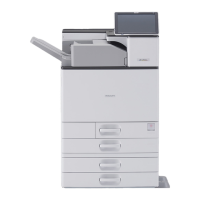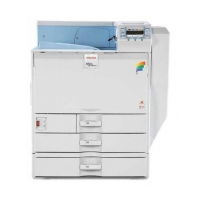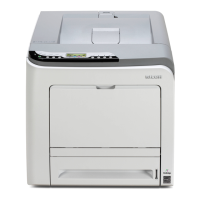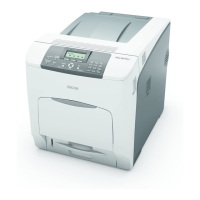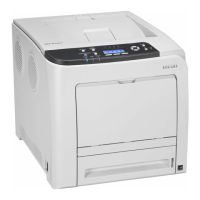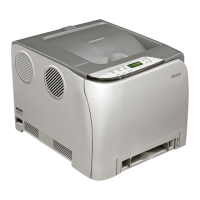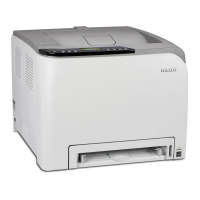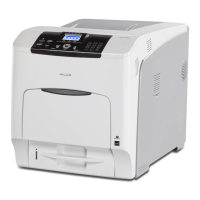• Tracing paper can curl easily due to humidity. If the paper has curled considerably, flatten it first, and
then load it.
• Some types of paper have a clear vertical or horizontal orientation depending on the direction of the
fibers. If you feed this type of paper in the opposite orientation, paper jams can occur. When loading
tracing paper, load the paper so that it is fed in the direction of the fibers.
• Print quality may not be guaranteed for custom size paper that is wider than 297 mm (11.69 inches)
in width or longer than 433 mm (17.05 inches) in length.
• When using paper whose sizes are not automatically selected, select the paper size manually using
the control panel. See "Loading Paper".
• p.136 "Registering Names to Paper Types"
• p.118 "Loading Paper"
Paper Weight and Capacity
Tray Supported paper weight
Supported capacity (Plain
paper)
Tray 1 60 to 256 g/m
2
(16 to 68 lb.) 550 sheets (80 g/m
2
, 20 lb.)
Tray 2 60 to 256 g/m
2
(16 to 68 lb.) 550 sheets (80 g/m
2
, 20 lb.)
500-sheet paper feed unit 60 to 256 g/m
2
(16 to 68 lb.) 550 sheets (80 g/m
2
, 20 lb.)
1000-sheet paper feed unit 60 to 256 g/m
2
(16 to 68 lb.) 550 sheets × 2 (80 g/m
2
, 20 lb.)
2000-sheet paper feed unit 60 to 256 g/m
2
(16 to 68 lb.)
1000 sheets × 2 (80 g/m
2
, 20
lb.)
Bypass tray 52 to 256 g/m
2
(14 to 68 lb.) 100 sheets (80 g/m
2
, 20 lb.)
• Do not load the paper so that the top of the stack exceeds the under limit mark inside the tray.
5. Paper and Other Media
106
